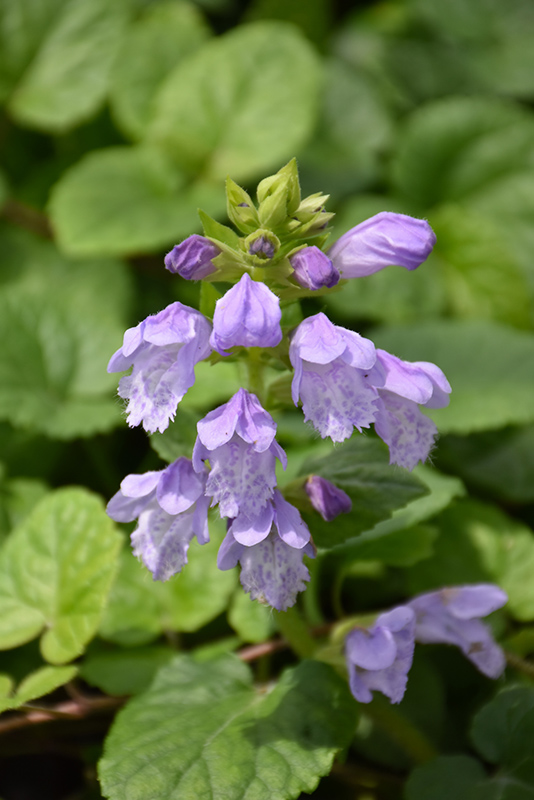Plant Height: 4 inches
Flower Height: 6 inches
Spacing: 15 inches
Sunlight:
![]()
![]()
Hardiness Zone: 4a
Other Names: Creeping Mint
Description:
A dense, low, trailing plant that resembles ground ivy, but does not have the aggressive tendencies; small spikes of lavender blue flowers in spring, over broad heart shaped green leaves; a great groundcover for shady gardens or borders
Ornamental Features
Meehan's Mint has masses of beautiful spikes of lavender tubular flowers with blue overtones and white throats rising above the foliage from mid to late spring, which emerge from distinctive violet flower buds, and which are most effective when planted in groupings. Its attractive tomentose heart-shaped leaves remain dark green in color throughout the season.
Landscape Attributes
Meehan's Mint is an herbaceous perennial with a trailing habit of growth, eventually spilling over the edges of hanging baskets and containers. Its medium texture blends into the garden, but can always be balanced by a couple of finer or coarser plants for an effective composition.
This plant will require occasional maintenance and upkeep, and is best cleaned up in early spring before it resumes active growth for the season. It is a good choice for attracting bees and butterflies to your yard, but is not particularly attractive to deer who tend to leave it alone in favor of tastier treats. It has no significant negative characteristics.
Meehan's Mint is recommended for the following landscape applications;
- Mass Planting
- Border Edging
- Groundcover
Planting & Growing
Meehan's Mint will grow to be only 4 inches tall at maturity extending to 6 inches tall with the flowers, with a spread of 18 inches. When grown in masses or used as a bedding plant, individual plants should be spaced approximately 15 inches apart. Its foliage tends to remain low and dense right to the ground. It grows at a medium rate, and under ideal conditions can be expected to live for approximately 10 years. As an herbaceous perennial, this plant will usually die back to the crown each winter, and will regrow from the base each spring. Be careful not to disturb the crown in late winter when it may not be readily seen!
This plant does best in full sun to partial shade. It prefers to grow in average to moist conditions, and shouldn't be allowed to dry out. It is not particular as to soil type or pH. It is highly tolerant of urban pollution and will even thrive in inner city environments. This species is native to parts of North America. It can be propagated by division.
